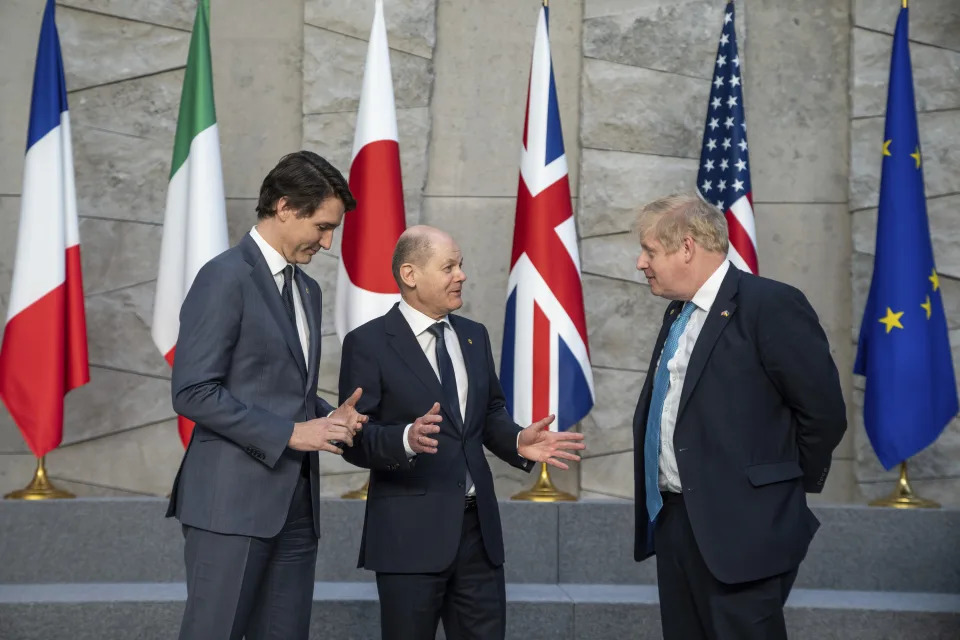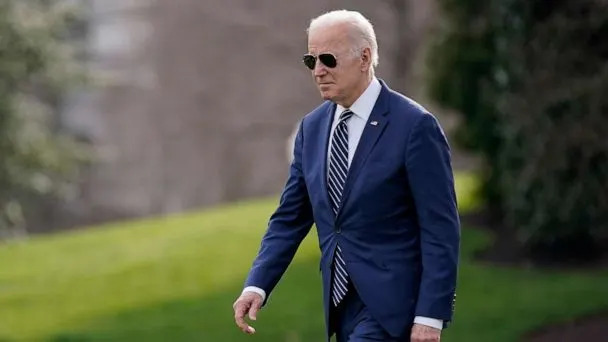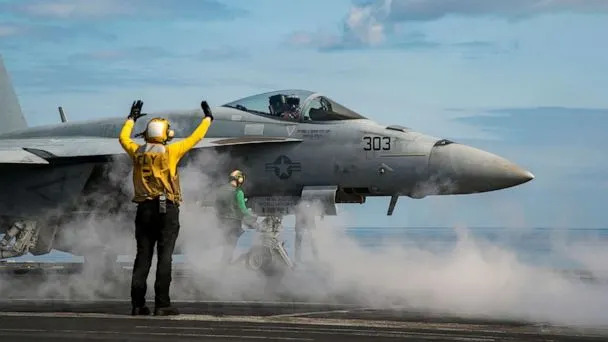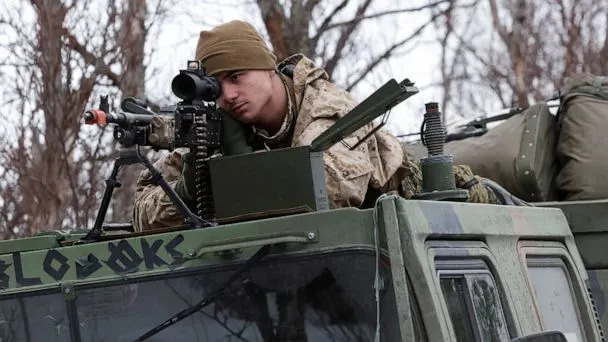The Hill
As many as 40K Russian troops killed, wounded, held prisoner or missing: NATO
March 23, 2022

NATO estimates that up to 15,000 Russian troops have been killed since the Kremlin’s attack on Ukraine began last month, with as many as 40,000 dead, wounded, taken prisoner or missing.
The alliance arrived at those figures based on information from Ukrainian officials, Western intelligence and information gleaned from Russia through official channels or unintentionally, a senior military official from NATO told The Wall Street Journal and The Associated Press.
NATO estimates that roughly 7,000 to 15,000 Russian soldiers have been killed since the attack started on Feb. 24, a major blow to Moscow, which sought to decapitate the Ukrainian government in a matter of days.
But the Russians were quickly mired by fierce Ukrainian opposition and issues with supplies, with the campaign now hitting four full weeks of fighting and NATO warning it is “rapidly approaching” a stalemate.
Ukraine also claims to have killed six Russian generals, while Moscow has only acknowledged one dead.
The new NATO figures mark the first time the alliance has publicly released Russian casualty estimates since the start of the war. U.S. officials have not provided public estimates of Russian or Ukrainian casualties, pointing to the questionable reliability of such information and a fast-moving and ever-changing conflict.
Russia has also closely guarded information on its casualties. The last time it acknowledged such information was on March 2, when it said almost 500 soldiers were killed and nearly 1,600 wounded.
On the Ukrainian side, President Volodymyr Zelensky said Wednesday that thousands of his people had been killed, including at least 121 children.
Zelensky said on March 12 that about 1,300 Ukrainian troops had been killed in action.
The Russian troop death toll has already exceeded the U.S. militaries losses in the first 18 years of the Afghanistan war, when just over 7,000 troops died.
The Kremlin, despite sending more than 150,000 troops into Ukraine, has made limited progress with its ground forces in recent weeks.
The Russian troops have been slowed or stopped by Ukrainian units using hit-and-run tactics and Western-supplied weapons, forcing them to destroy cities from afar using bombs and heavy shelling.
Moscow has lost more than 10 percent of its combat force in Ukraine, with major issues with food, fuel and cold weather gear shortages, a senior U.S. defense official told reporters Tuesday.
Ukrainians forces, meanwhile, have continued to defend several major cities including the capitol of Kyiv and have started to move to take back territory Russians had gained in recent days.
Related:
Yahoo! News
Russia has suffered up to 40,000 casualties on Ukraine battlefield, claims Nato
Jimmy Nsubuga – March 23, 2022
Russia may have suffered between 30,000 and 40,000 battlefield casualties in Ukraine, according to a senior Nato military officer.
The military officer, speaking on condition of anonymity under ground rules set by Nato, added between 7,000 and 15,000 Russians had been killed since it invaded its neighbour on 24 February.
The estimate of those killed is based on information from the Ukrainian government, indications from Russia, and open-source data, Associated Press reported.
It is Nato’s first public estimate of Russian casualties since the beginning of the war.
The US government has largely declined to provide public estimates of Russian or Ukrainian casualties, saying available information is of questionable reliability.
The Nato military officer, in a briefing from the alliance’s military headquarters in Belgium on Wednesday, said the estimate of 30,000 to 40,000 Russian casualties is derived from what he called a standard calculation that in war an army suffers three wounded soldiers for every soldier killed.
The officer said the casualties include killed in action and wounded in action, and those taken prisoner or missing in action.
The exact toll on Putin’s forces is unknown.
Earlier this week, Western intelligence officials placed the tally of Russian deaths at a “reasonable estimate” of 10,000. If true, this would represent the heaviest number of Russian casualties since the Second World War.
This figure appeared to match a report in a pro-Kremlin Russian newspaper called Komsomolskaya Pravda on Tuesday, which cited Russian Defence ministry data confirming 9,861 troops had died.
However, the death tally was quickly deleted from the article with the newspaper later accusing hackers of planting fake news on its website.
Russia has not officially updated its casualty figures since stating on 2 March that 498 servicemen had been killed and 1,597 wounded.
Read more: Putin’s invasion has killed over 120 children, Ukraine says
What is clear, however, is that Russian forces have taken heavy losses in the four weeks since the invasion began. They have been frozen in place for at least a week on multiple fronts and face supply problems and fierce resistance.
As a consequence, Russia has turned to siege tactics and bombardment, causing massive destruction and many civilian deaths.
Despite its losses so far, Russia may still be hoping to make more gains on the battlefield, especially in the east, in territory including Mariupol, which Moscow demands Ukraine cede to Russian-backed separatists.
But in a daily intelligence update, the UK’s defence ministry said the entire battlefield across northern Ukraine – which includes huge armoured columns that once bore down on Kyiv – was now “static”, with the invaders apparently trying to reorganise.
A veteran aide of president Vladimir Putin has also resigned over the war and left Russia with no intention to return, two sources said on Wednesday, making him the first senior official to break with the Kremlin since Putin launched his invasion a month ago.
The Kremlin confirmed that the aide, Anatoly Chubais, had resigned of his own accord.
Read more: Russian supplies will last ‘no more than three days’, Ukraine military claims
In a further sign of growing Ukrainian confidence, on Wednesday a Ukrainian presidential adviser Oleksiy Arestovych said he expected the active phase of the Russian invasion to be over by the end of April as the Russian advance had already stalled in many areas.
Speaking on local television, Arestovych said Russia had already lost 40% of its attacking forces and played down the prospect of Russia waging nuclear war.
Nato will likely decide on Thursday to ramp up military forces on its eastern flank, the head of the alliance said, while also warning Russia against using nuclear weapons.
“I expect leaders will agree to strengthen NATO’s posture in all domains, with major increases in the eastern part of the alliance. On land, in the air and at sea,” NATO chief Jens Stoltenberg told a news conference ahead of the summit in Brussels on Thursday.
Related:
Air Force Times
NATO: 7,000 to 15,000 Russian troops dead in Ukraine
Nebi Qena, Cara Anna, The Associated Press – March 23, 2022
KYIV, Ukraine — NATO estimated on Wednesday that 7,000 to 15,000 Russian soldiers have been killed in four weeks of war in Ukraine, where ferocious fighting by the country’s fast-moving defenders has denied Moscow the lightning victory it sought.
By way of comparison, Moscow lost about 15,000 soldiers in Afghanistan over 10 years.
A senior NATO military official said the alliance’s estimate was based on information from Ukrainian officials, what Russia has released — intentionally or not — and intelligence gathered from open sources. The official spoke on condition of anonymity under ground rules set by NATO.
When Russia unleashed its invasion Feb. 24 in Europe’s biggest offensive since World War II, a swift toppling of Ukraine’s democratically elected government seemed likely.
But with Wednesday marking four full weeks of fighting, Russia is bogged down in a grinding military campaign.
Russian invasion in Ukraine could spell major shifts in the Pacific
With its ground forces repeatedly slowed or stopped by hit-and-run Ukrainian units armed with Western-supplied weapons, Russian President Vladimir Putin’s troops are bombarding targets from afar, falling back on the tactics they used in reducing cities to ruins in Syria and Chechnya.
As U.S. President Joe Biden left for Europe on Wednesday to meet with key allies about possible new sanctions against Moscow and more military aid to Ukraine, he warned there is a “real threat” Russia could use chemical weapons.
Addressing Japan’s parliament on Wednesday, Ukrainian President Volodymyr Zelenskyy said four weeks of war have killed thousands of his people, including at least 121 children.
“Our people cannot even adequately bury their murdered relatives, friends and neighbors. They have to be buried right in the yards of destroyed buildings, next to the roads,” he said.
Still, major Russian objectives remain unfulfilled. The capital, Kyiv, has been shelled repeatedly hit but is not even encircled.
Near-constant shelling and gunfire shook the city Wednesday, with plumes of black smoke rising from the western outskirts, where the two sides battled for control of multiple suburbs. Mayor Vitali Klitschko said at least 264 civilians have been killed in the capital since war broke out.
Families of troops deployed to NATO’s flank sound off in town hall with Army’s top NCO
In the south, the port city of Mariupol has seen the worst devastation of the war, under weeks of siege and bombardment. But Ukrainian forces have prevented its fall, thwarting an apparent bid by Moscow to fully secure a land bridge from Russia to Crimea, seized from Ukraine in 2014.
Zelenskyy said 100,000 civilians remain in a city that had 430,000 people. Efforts to get desperately needed food and other supplies to those trapped have often failed.
Zelenskyy accused Russian forces of seizing a humanitarian convoy. Deputy Prime Minister Iryna Vereshchuk said the Russians were holding captive 11 bus drivers and four rescue workers along with their vehicles.
It is not clear how much of Mariupol is still under Ukrainian control. Fleeing residents say fighting continues street by street. In their last update, over a week ago, Mariupol officials said at least 2,300 people had died, but the true toll is probably much higher. Airstrikes in the past week destroyed a theater and an art school where civilians were sheltering.
In the besieged northern city of Chernihiv, Russian forces bombed and destroyed a bridge that was used for aid deliveries and civilian evacuations, regional governor Viacheslav Chaus said.
Kateryna Mytkevich, who arrived in Poland after fleeing Chernihiv, wiped away tears as she spoke about what she had seen. The city is without gas, electricity or running water, said Mytkevich, 39, and entire neighborhoods have been destroyed.
“I don’t understand why we have such a curse,” she said.
Despite plenty of evidence to the contrary, Kremlin spokesman Dmitry Peskov insisted the military operation is going “strictly in accordance” with plans.

The most recent figure for Ukraine’s military losses came from Zelenskyy on March 12, when he said that about 1,300 Ukrainian servicemen had been killed in action.
The NATO official said 30,000 to 40,000 Russian soldiers are estimated to have been killed or wounded.
Russia has released very little information on its casualties, saying March 2 that nearly 500 soldiers had been killed and almost 1,600 wounded.
Ukraine also claims to have killed six Russian generals. Russia acknowledges just one dead general.
The figures from NATO represent the alliance’s first public estimate of Russian casualties since the war began. The U.S. government has largely declined to provide public estimates of Russian or Ukrainian casualties, saying available information is of questionable reliability.
With casualties mounting and quick victory no longer in sight, Russia is having to work to suppress dissent and shore up morale.
It has arrested thousands of antiwar protesters and cracked down on the media. Also, under a law passed Wednesday, troops in Ukraine will get the same benefits as veterans of previous wars, including tax breaks, discounts on utilities and preferential access to medical treatment.
In an apparent reflection of growing divisions in Russia’s top echelons, top official Anatoly Chubais has resigned, Peskov told the Interfax news agency. Chubais, the architect of Russia’s post-Soviet privatization campaign, had served at a variety of top official jobs over three decades. His latest role was as Putin’s envoy to international organizations.
Peskov would not say if Chubais had left the country.
Western officials say Putin’s forces are facing serious shortages of food, fuel and cold weather gear, with soldiers suffering frostbite, while Ukraine’s defenders have been going more on the offensive.
Still, Russia’s far stronger, bigger military has many Western military experts warning against overconfidence in Ukraine’s long-term odds. The Kremlin’s practice in past wars has been to grind down resistance with strikes that flattened cities, killing countless civilians and sending millions fleeing.
Talks to end the fighting have continued by video. Zelenskyy said negotiations with Russia are going “step by step, but they are going forward.”
With no peace, those not yet fighting prepared to do so.
“Everything’s a best-seller these days,” said Zakhar Sluzhalyy, who owns a gun shop in the western city of Lviv.
“We’re defending our land,” he said. “We’re fighting for our freedom and that of the rest of Europe.”
Anna reported from Lviv, Ukraine. Associated Press writers Robert Burns in Washington, Yuras Karmanau in Lviv, and other AP journalists around the world contributed to this report.





 British Prime Minister Boris Johnson, left, and Turkey’s President Tayyip Erdogan attend a bilateral meeting during a NATO summit on Russia’s invasion of Ukraine, at the alliance’s headquarters in Brussels. (Henry Nicholls/Pool, AP)
British Prime Minister Boris Johnson, left, and Turkey’s President Tayyip Erdogan attend a bilateral meeting during a NATO summit on Russia’s invasion of Ukraine, at the alliance’s headquarters in Brussels. (Henry Nicholls/Pool, AP) From left, Britain’s Prime Minister Boris Johnson, French President Emmanuel Macron and U.S. President Joe Biden arrive for a G7 leaders’ group photo during a NATO summit in Brussels, (Henry Nicholls/Pool via AP)
From left, Britain’s Prime Minister Boris Johnson, French President Emmanuel Macron and U.S. President Joe Biden arrive for a G7 leaders’ group photo during a NATO summit in Brussels, (Henry Nicholls/Pool via AP)



